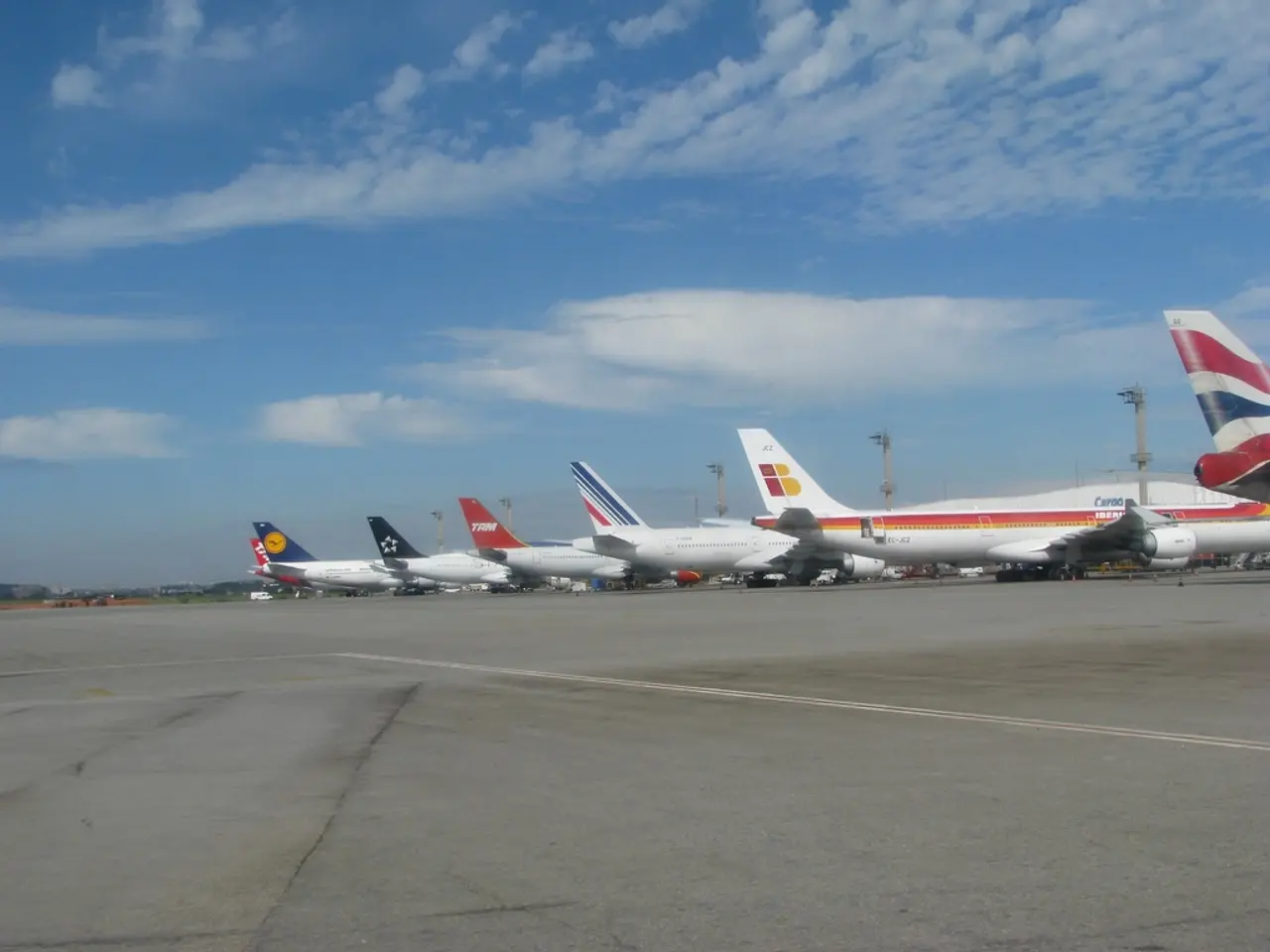Germans Trail in Aviation Industry Economy - Germany Lagging in Air Transport Development
The German air traffic industry is facing a challenging recovery, with passenger numbers still lagging behind pre-pandemic levels. According to the association BDL, German airports have only managed to reach 87% of 2019 levels, significantly lower than the European average of 104%.
The gap is particularly large for domestic flights, which have not even reached half (49 percent) of pre-crisis levels in the first half of the year. This is due, in part, to the increased state-imposed costs, including taxes, air traffic control fees, and security charges, which more than doubled since 2019.
Jens Bischof, CEO of Eurowings, agrees, stating that for a typical European connection, state burdens would need to be halved to improve the situation in the German air traffic industry. Bischof also notes that Germans are lagging behind other European countries in air traffic recovery.
The high costs have made Germany less competitive, prompting airlines to reduce their presence and avoid German airports. As a result, the number of aircraft based in Germany dropped from 190 in 2019 to 130 in 2025, causing job losses of around 10,000 and heavy economic losses estimated at €4 billion annually.
Low-cost airlines like Ryanair and Easyjet have relocated approximately 60 out of 190 aircraft previously stationed in Germany to other countries since 2019, leaving 130 aircraft. Every third aircraft withdrawn from German airports is being deployed in other European countries, resulting in a loss of international connectivity and a multi-billion euro loss for the German economy.
Despite a 2.8% increase in passenger numbers in the first half of the year, the industry is still facing challenges. Each medium-haul aircraft secures around 170 jobs and contributes approximately 70 million euros to the German GDP.
In the winter flight schedule starting at the end of October, the total offer from German airports will increase by 8 points to around 90 percent of pre-Corona levels. However, this is still below the levels seen in other European countries, where the winter flight schedule will increase by 7 points to 116 percent.
The aviation industry blames the German government’s political inaction and the postponement of reducing the aviation tax for hampering recovery. The abolition of the air traffic tax by the federal government, which was scheduled for 2026, would have been a first signal to airlines.
Industry leaders warn that ongoing unfavorable competitive conditions continue to undermine Germany’s air connectivity, mobility, and air freight transport. The relocation of aircraft to cheaper airports in neighboring countries such as Liège, Amsterdam, and Maastricht is a testament to this, with sluggish passenger growth (only 3% in the first half of 2025) and air travel arrivals that remain about 16% below pre-pandemic levels.
[1] BDL Report - German Air Traffic Industry Recovery [2] German Air Traffic Control Report - State of the Industry [3] Eurowings CEO Interview - German Air Traffic Challenges [4] German Aviation Association - Air Traffic Recovery Data
- In an effort to promote a stronger recovery and boost competitiveness within the industry, the community could consider implementing policy reforms that focus on reducing burdensome taxes, air traffic control fees, and security charges, as suggested by Jens Bischof, CEO of Eurowings.
- To bridge the gap in air traffic recovery and enhance international connectivity, a potential avenue for the German community could be investing in vocational training programs for the aviation sector, allowing Germany to maintain skilled workforces and attract more airlines and passengers, akin to the thriving vocational training systems commonly found in other European countries.







